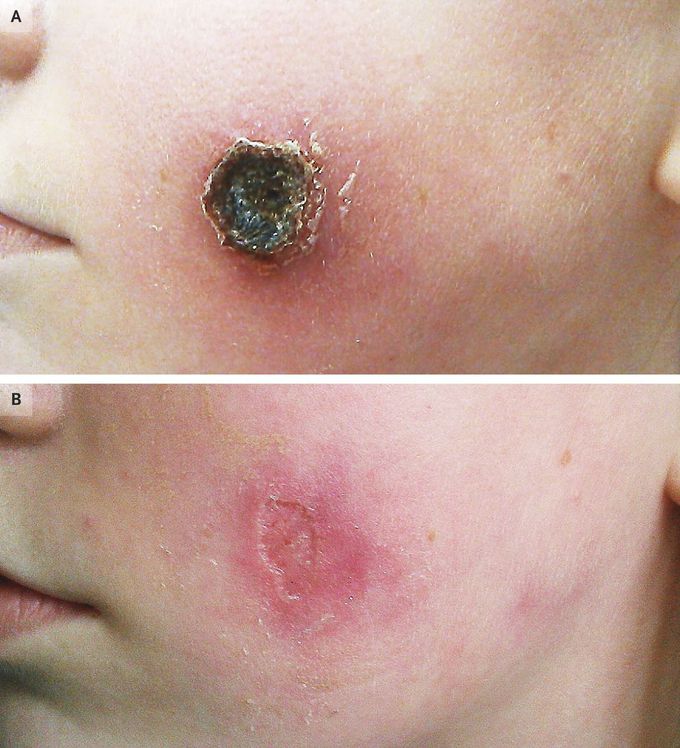


Cowpox Virus Infection
An 11-year-old girl presented to the hospital with a skin lesion on her left cheek that had been present for 3 weeks. She lived in a suburban area in Poland and had direct contact with cats that lived in her home and roamed freely; no bites or scratches were reported. Her parents reported that initially a pustule had appeared on the girl’s left cheek, and it had evolved into a necrotic ulceration with a black eschar. The eschar was 2 cm in diameter and was accompanied by expanding local erythema (Panel A) and submandibular lymphadenopathy. She had been treated empirically with antibiotics, but there was no improvement. Incision of the lesion did not yield pus, and a bacterial culture was negative. A swab specimen from the lesion and a serum sample were tested for orthopoxvirus DNA and cowpox virus–specific oligonucleotides, which were detected by polymerase chain reaction (PCR). A PCR assay for Bacillus anthracis DNA and serologic tests for Francisella tularensis and Bartonella henselae infection were negative. Cowpox virus infection is a rare zoonotic disease. Despite the name, humans can contract cowpox virus from infected cats. There is no specific treatment. In this patient, healing was prolonged, and surgical removal of the necrotic eschar was performed. After 3 months, a 1-cm scar surrounded by a residual area of erythema was present (Panel B). Ewa Talarek, M.D., Ph.D. Magdalena Marczynska, M.D., Ph.D. Medical University of Warsaw, Warsaw, Poland source: nejm.org


